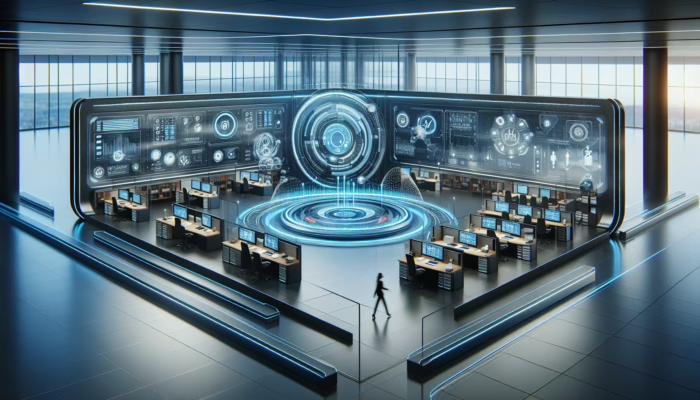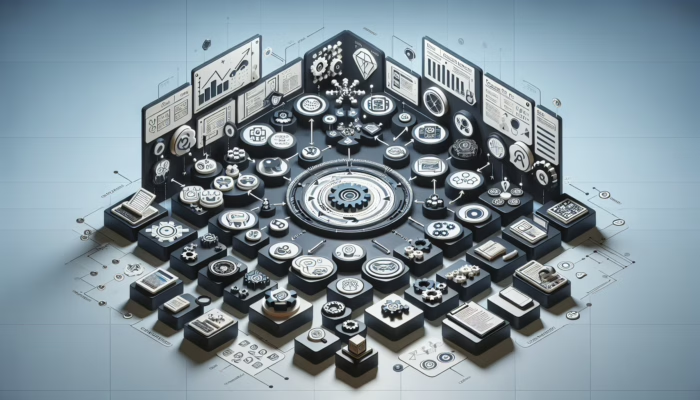Last Updated on 15/06/2025 by Admin
Uncover Transformative Advances in Gene Technology for Restoring Hearing Function
Revolutionary Gene Editing Techniques Leading the Charge in Hearing Restoration

The domain of hearing restoration is witnessing extraordinary advancements, primarily driven by state-of-the-art gene editing technologies like CRISPR. These pioneering tools enable precise and targeted modifications to an individual’s DNA, equipping scientists to directly tackle genetic anomalies that are closely associated with hearing loss. For instance, CRISPR can be utilised to amend specific genetic defects that lead to auditory dysfunction, potentially rejuvenating the functionality of hair cells nestled within the inner ear. This innovative approach marks a significant shift from traditional remedies such as hearing aids and cochlear implants, as gene therapy aims to confront the root causes of hearing loss, rather than merely alleviating its symptoms.
Global research efforts are rapidly evolving, with pioneering laboratories—from Stanford to Singapore—leading the charge in refining these gene therapy methodologies. A prevalent strategy involves the utilisation of viral vectors to proficiently deliver therapeutic genes straight into the inner ear. Such breakthroughs not only hold the potential to restore hearing abilities but also enhance sound perception and clarity, consequently elevating the quality of life for millions grappling with hearing loss.
As researchers delve deeper into the complex realm of auditory genetics, new targets for gene therapy are being identified. For example, studies focusing on mutations within the SLC26A4 gene have shown significant potential for patients diagnosed with Pendred syndrome, a condition characterised by progressive hearing loss. The prospective application of gene editing techniques in the realm of personalised medicine within audiology is becoming increasingly realistic, paving the way for tailored treatment strategies that align with the unique genetic make-up of each individual patient.
Promising Clinical Trials Demonstrating the Efficacy of Gene Therapy for Hearing Loss
The promise of gene technology in the realm of hearing restoration is far from hypothetical; ongoing clinical trials are meticulously assessing the safety and effectiveness of these groundbreaking therapies. Research initiatives across the globe are dedicated to evaluating various gene-editing strategies aimed at treating diverse forms of hearing loss. For instance, trials conducted in the United States and Europe are focusing on gene therapy solutions for ototoxicity-induced hearing loss, which is a common concern for individuals undergoing chemotherapy. These clinical trials are pivotal in determining whether gene therapy can offer viable solutions to previously insurmountable hearing-related issues.
Recent updates from these clinical trials reveal that several promising candidates are advancing through various developmental phases. Initial trials have reported encouraging results in animal models, with significant restoration of hearing capabilities observed post-treatment. As groups of human participants are closely monitored, the importance of thorough data collection and ongoing analysis is emphasised, ensuring that both patient safety and treatment effectiveness remain paramount.
Furthermore, the success rates of these clinical trials could pave the way for regulatory approval, fundamentally transforming the landscape of auditory healthcare. Regulatory agencies, such as the FDA, are meticulously observing these advancements, acknowledging the transformative potential that gene therapies hold for hearing restoration. With every positive breakthrough, the vision of a future where hearing loss can be proactively managed through gene technology draws closer to becoming a reality.
Imagining a Future Where Gene Therapy Revolutionises Hearing Restoration
Imagining the future of hearing restoration through the lens of gene therapy evokes a sense of optimism and excitement. The potential breakthroughs on the horizon promise to fundamentally reshape our understanding of and approaches to treating hearing loss. Researchers envision a time when gene therapies could be administered during infancy or early childhood, ideally before significant hearing impairment develops. This proactive approach has the potential to dramatically change the trajectory of auditory health for countless individuals.
In addition to preventive strategies, the integration of gene therapy with cutting-edge technologies, such as AI-driven diagnostics, is emerging as an innovative frontier. These advanced tools can analyse genetic profiles to identify individuals at risk for developing hearing loss, thereby enabling targeted interventions. As gene editing techniques continue to advance, the prospect of crafting comprehensive, multi-dimensional treatments becomes increasingly feasible. Imagine therapies that not only rectify genetic defects but also bolster the auditory system’s resilience against environmental stressors such as noise pollution or the natural effects of ageing.
Nonetheless, the journey towards these advancements is fraught with challenges, including technical hurdles in gene delivery methods and the pressing need to ensure long-term safety. As we gaze into the future, the potential for synergising gene therapy with other pioneering technologies holds the key to unlocking the full spectrum of auditory restoration, heralding a new era for those affected by hearing loss.
Overcoming Regulatory Hurdles in Gene Technologies for Hearing Restoration

As the field of gene technology for hearing continues to progress, the regulatory landscape presents a unique amalgamation of opportunities and challenges. Navigating the approval processes for gene therapies necessitates a delicate balance between scientific innovation and regulatory oversight. Agencies such as the FDA and EMA are tasked with the essential responsibility of ensuring that these groundbreaking treatments are both safe and effective before they become accessible to the public.
Challenges primarily arise from the novel and complex nature of gene therapies. Unlike traditional pharmaceuticals, gene therapies involve modifications at the genetic level, which can lead to unpredictable outcomes. Regulators require extensive data on long-term effects, necessitating rigorous clinical trials that can span several years. This complexity can slow the pace of innovation and delay access for those urgently in need of treatment.
Moreover, there is an urgent necessity for clarity surrounding the regulatory frameworks that govern gene editing technologies globally. Different countries adopt varying approaches to gene therapy regulations, which can create discrepancies in access and ethical standards. It is imperative for stakeholders to collaborate on an international level to establish harmonised guidelines that prioritise safety while simultaneously promoting innovation.
The future of gene technology for hearing is contingent not only on scientific breakthroughs but also on effective regulatory strategies that can adapt to the rapid advancements in this sector. By addressing these regulatory challenges, we can hasten the translation of groundbreaking research into viable solutions for those affected by hearing loss.
Examining Ethical Considerations in Gene Therapy for Hearing Restoration
The emergence of gene technology for hearing necessitates a critical evaluation of the ethical implications accompanying such powerful interventions. Foremost among these is the matter of consent and autonomy. As we delve into gene therapies, particularly for children predisposed to hearing loss, a pivotal question arises: who should make the decision to undergo these therapies, and how do we respect the autonomy of individuals who may not yet possess the capacity to advocate for themselves?
Informed consent emerges as a cornerstone in these discussions. Families must have access to comprehensive information concerning the potential risks and benefits of gene therapy, as well as the long-term implications of modifying their genetic composition. Ethical frameworks must emphasise patient education, ensuring that individuals can make choices that resonate with their values and beliefs.
Equity and accessibility in gene technology for hearing represent pressing ethical dilemmas. As these therapies become available, it is imperative to ensure that all populations, irrespective of socioeconomic status or geographical location, have fair access. Without careful consideration, the promise of advanced gene technology could inadvertently exacerbate existing disparities in healthcare, resulting in unequal availability of treatment options.
Finally, the long-term consequences of genetic modifications warrant rigorous scrutiny. As we alter the fundamental structure of human genetics, vigilance regarding potential unforeseen consequences is essential. The discourse surrounding gene therapy should extend beyond immediate benefits and encompass how these advancements will affect future generations. By fostering transparent discussions about the ethical dimensions of gene technology for hearing, we can navigate this complex landscape with integrity and foresight.
The Influence of Gene Technology on Hearing Loss Prevention Strategies
Implementing Innovative Early Detection Methods for Hearing Loss

The early identification of genetic predispositions to hearing loss is crucial in preventing irreversible auditory damage. The potential of gene technology for hearing extends beyond treatment; it encompasses innovative detection strategies that can identify at-risk individuals before significant hearing loss occurs. Advances in genetic testing are paving the way for screening newborns for hereditary conditions associated with hearing loss, thus enabling timely interventions.
For example, the use of next-generation sequencing (NGS) technology is revolutionising the identification of genetic mutations related to hearing impairment. These advanced tests can analyse thousands of genes simultaneously, providing a comprehensive overview of an individual’s genetic profile. This level of precision allows healthcare providers to develop tailored monitoring and treatment plans, effectively minimising the risk of progressive hearing loss.
Moreover, integrating these early detection methods into standard paediatric care can lead to significant improvements in outcomes. By incorporating genetic screening into regular hearing assessments, healthcare providers can streamline the process for families. This proactive approach not only raises awareness but also empowers parents with the knowledge needed to make informed decisions regarding their child’s auditory health.
However, the implementation of early detection methods raises critical questions about privacy and consent. As genetic information becomes more accessible, safeguarding patient data is paramount. Establishing clear guidelines for data handling and sharing will be crucial in fostering trust between healthcare providers and patients as we navigate the complexities of genetic screening in audiology.
Exploring Preventive Gene Therapies to Preserve Hearing Function
The emergence of preventive gene therapies signifies a transformative chapter in the ongoing battle against hearing loss. As researchers uncover the intricacies of our genetic code, strategies are being devised to proactively modify genes associated with hearing impairment. Envision a future where, through a simple injection or oral treatment, individuals could eliminate their risk of developing age-related hearing loss or hereditary auditory conditions.
One promising avenue involves the utilisation of antisense oligonucleotides, which are short strands of DNA capable of binding to specific RNA sequences. By targeting and modifying the expression of genes responsible for hearing loss, researchers are investigating pathways to enhance the functionality of hair cells in the cochlea. This could lead to therapies that not only prevent hearing loss but also improve auditory function, ensuring that individuals maintain optimal hearing throughout their lives.
Public health initiatives are beginning to recognise the significance of preventive gene therapies in their strategies to combat hearing loss. By investing in research and development, governments and health organisations can facilitate access to cutting-edge technologies. Collaborations with genetic researchers and audiologists will be essential in creating comprehensive prevention programmes that empower individuals to take charge of their auditory health.
Looking ahead, the incorporation of preventive gene therapies into standard healthcare practices holds tremendous promise. By shifting our focus from reactive treatment to proactive prevention, we can fundamentally alter the trajectory of hearing health for generations to come.
Public Health Initiatives Promoting Hearing Loss Prevention Strategies
The integration of gene technology into hearing loss prevention programmes is gaining momentum, with public health initiatives leading these efforts. Globally, various organisations are recognising the importance of addressing hearing loss as a pressing public health issue. Campaigns designed to raise awareness about genetic predispositions and the advantages of early intervention are emerging as effective tools in this battle.
Public health authorities are collaborating with researchers, audiologists, and geneticists to develop comprehensive strategies that harness the promise of gene technology for hearing. These initiatives encompass community-based awareness programmes aimed at educating the public about the importance of genetic testing and the potential for preventive therapies. By engaging communities through workshops, seminars, and outreach events, these programmes strive to demystify genetic science and encourage proactive measures.
Furthermore, policymakers are increasingly advocating for the incorporation of genetic screening into routine health assessments. This is particularly critical in underserved populations where healthcare access is limited. By ensuring that gene technology is embedded within public health frameworks, we can establish pathways for early detection and intervention, ultimately alleviating the burden of hearing loss on individuals and society as a whole.
Additionally, partnerships with schools and educational institutions are being utilised to instill awareness from a young age. By educating children and their families about the genetic aspects of hearing loss, we can foster a culture of prevention that prioritises auditory health. These initiatives are crucial in shaping a future where hearing loss is not merely accepted as a natural part of ageing but recognised as a preventable condition.
Ethical Dimensions of Gene Technology for Hearing Restoration
Understanding Consent and Autonomy in Gene Therapy Choices
The ethical landscape surrounding gene technology for hearing is intricate, particularly concerning issues of consent and autonomy. As gene therapies advance, the question of who holds the authority to make decisions regarding genetic interventions becomes increasingly complex. For children born with genetic predispositions to hearing loss, parents often confront the challenging task of determining the most appropriate course of action. It is essential to provide families with clear and accurate information about the potential risks and benefits to facilitate informed consent.
Informed consent should encompass more than just signing a form; it necessitates an ongoing dialogue between healthcare providers and patients. As research progresses, clinicians must engage in transparent conversations regarding the implications of gene therapy, allowing individuals to articulate their values and preferences. This collaborative approach not only upholds patient autonomy but also fosters empowerment in healthcare decision-making.
Moreover, with the increasing prevalence of gene therapies, societal pressures can arise. Families may feel compelled to pursue genetic interventions due to societal expectations or perceived norms. It is crucial to cultivate an environment that respects individual choices, acknowledging that the decision to undergo gene therapy is deeply personal. Providing emotional support and counselling options can help alleviate the burden of these decisions, ensuring that families feel confident in their choices.
As we navigate the ethical complexities of gene technology for hearing, prioritising the principles of informed consent, autonomy, and respect for diverse perspectives is imperative. By fostering open dialogue and understanding, we can establish an ethical framework that supports individuals and families in making choices that resonate with their values.
Ensuring Accessibility and Equity in Gene Technology for Hearing Restoration
Guaranteeing equitable access to gene technology for hearing represents an urgent ethical challenge that necessitates concerted attention from all stakeholders. As gene therapies emerge as potential game-changing solutions for hearing loss, disparities in access could exacerbate existing inequalities in healthcare. Individuals from marginalised communities may face significant barriers to accessing these innovative treatments, raising serious ethical concerns regarding fairness and justice.
Addressing accessibility begins with a commitment to transparency in the development and distribution of gene therapies. Collaborative efforts among healthcare providers, researchers, and policymakers are essential to ensure that these solutions reach diverse populations. This may involve forming partnerships with community organisations to educate underserved groups about the benefits and availability of gene therapies.
Additionally, financial barriers must be critically assessed. The high costs associated with advanced gene therapies can deter families from pursuing treatment options, particularly in low-income regions. Advocating for insurance coverage and governmental support can significantly alleviate these financial burdens, enabling broader access to cutting-edge treatments.
Moreover, cultural considerations play a pivotal role in ensuring that gene technology is embraced by a variety of populations. Engaging community leaders and representatives in the development of educational resources will guarantee that information is culturally sensitive and resonates with diverse groups. By prioritising equity in gene technology for hearing, we can strive toward a future where everyone has the opportunity to benefit from these extraordinary advancements.
Investigating the Long-term Effects of Genetic Modifications on Hearing
As we embark on the journey of genetic modifications aimed at addressing hearing loss, it is crucial to evaluate the long-term ethical implications of these interventions. The promise of gene technology for hearing extends beyond immediate benefits, necessitating careful consideration of how these therapies will influence future generations. The prospect of altering human genetics raises profound questions about identity, responsibility, and the unforeseen consequences of our actions.
One key aspect to consider is the potential for unforeseen genetic repercussions. As we celebrate the successes of gene therapies, it is essential to remain vigilant regarding the long-term effects of genetic modifications on individuals and their offspring. Ongoing research must monitor the outcomes of gene therapies to ensure that any adverse effects can be swiftly addressed.
Furthermore, a moral responsibility exists to contemplate the implications of “designer genes.” As gene technology progresses, the distinction between treatment and enhancement may become blurred, leading to ethical dilemmas regarding what constitutes appropriate use. This discourse must involve diverse voices to ensure that we navigate the complexities of genetic interventions responsibly and with a commitment to ethical standards.
The long-term ethical implications of genetic modifications for hearing are intricately connected to societal values and norms. As we advance into this new frontier, fostering inclusive discussions about the implications of gene technology will be crucial. By engaging diverse perspectives and prioritising ethical considerations, we can shape a future where the promise of gene technology is realised responsibly and equitably.
Integrating Technology with Gene Therapy for Enhanced Hearing Solutions
Combining Gene and Device Therapies for Comprehensive Hearing Restoration
The convergence of gene therapy and device therapies marks a revolutionary chapter in hearing restoration, where the potential of gene technology for hearing is enhanced through technological collaboration. This multifaceted approach merges the precision of genetic interventions with the functional advantages of hearing devices, creating a holistic solution for individuals experiencing hearing loss.
Innovations in cochlear implants and hearing aids are laying the groundwork for this integration. For instance, researchers are investigating how gene therapy could enhance the efficacy of cochlear implants by addressing the underlying genetic causes of hearing loss. Picture a future where a cochlear implant not only assists hearing but also stimulates the regeneration of hair cells through targeted gene therapies, resulting in a comprehensive solution that tackles both symptoms and root causes.
Moreover, the evolution of artificial intelligence (AI) is expanding the potential for personalised hearing solutions. AI algorithms can analyse an individual’s auditory profile and adapt devices in real-time, optimising sound quality based on the user’s unique hearing characteristics. When combined with gene therapies that enhance auditory function, this synergy promises to revolutionise the hearing experience, enabling individuals to fully engage with their environments.
However, the combination of gene and device therapies also raises important questions about regulatory compliance and ethical considerations. As these technologies converge, regulatory bodies must adapt their frameworks to address the complexities of dual interventions. Collaboration among regulatory agencies, researchers, and healthcare providers will be essential to ensure that safety and efficacy standards are maintained.
As we explore the potential of integrating gene and device therapies, we stand on the brink of a new frontier in auditory healthcare. This innovative approach has the power to redefine our understanding and treatment of hearing loss, offering hope for millions globally.
Prioritising Data Management and Privacy in Gene Therapy
In the rapidly evolving landscape of gene technology for hearing, managing genetic data responsibly is of utmost importance. As we tap into the potential of genetic testing and therapies, issues surrounding privacy and data security must be central to our discussions. The collection and analysis of sensitive genetic information come with profound ethical responsibilities, necessitating robust frameworks for data management.
Individuals must feel assured that their genetic information will be treated with the highest level of confidentiality and care. Implementing strict protocols for data storage, access, and sharing is crucial in fostering trust between patients and healthcare providers. Furthermore, transparency regarding how genetic data is utilised for research purposes is essential to ensure that individuals feel empowered in their choices.
Emerging technologies, such as blockchain, provide innovative solutions for securing genetic data. By establishing decentralised systems that allow individuals to control access to their information, we can enhance privacy while facilitating research and collaboration. These advancements will be vital as we navigate the intricacies of gene technology for hearing in an interconnected world.
Additionally, ongoing education and awareness campaigns are necessary to inform individuals about their rights concerning genetic data. By empowering patients to comprehend the implications of sharing their genetic information, we can cultivate a culture of informed consent and accountability in the sphere of gene therapy.
In summary, responsible data management and privacy protection are essential elements in advancing gene technology for hearing. By prioritising these ethical considerations, we can create a framework that respects individual rights while promoting innovation in the field.
Enhancing User Experience Through Integrated Gene and Device Therapies
Enhancing user experience is a crucial aspect of integrating gene therapy with hearing technologies. The promise of gene technology for hearing extends beyond medical advancements; it encompasses the overall quality of life for individuals with hearing loss. As technologies continue to evolve, so too must our focus on how these interventions impact daily living.
User-centred design principles should guide the development of gene and device therapies, ensuring they are not only effective but also user-friendly. From intuitive interfaces to personalised settings, the objective is to create solutions that seamlessly integrate into individuals’ lives. For example, advancements in smart hearing aids that automatically adjust to environmental changes can significantly improve user experience, allowing individuals to enjoy sound clarity without the need for constant modifications.
Moreover, incorporating user feedback into the design process is essential. Listening to the experiences and preferences of individuals with hearing loss can inform the development of more effective and engaging solutions. This collaborative approach fosters a sense of ownership and empowerment, positioning users as active participants in their auditory health journey.
Furthermore, ongoing support and education are vital in enhancing the user experience. Providing comprehensive training programmes for users and their families can ensure confidence in utilising these technologies. Whether through online resources, community workshops, or one-on-one sessions with audiologists, accessible education is key to maximising the benefits of integrated gene and device therapies.
As we strive to improve user experiences in the realm of hearing technology, fostering collaboration between researchers, designers, and users will be essential. By prioritising user-centric approaches, we can create solutions that genuinely enhance the lives of individuals with hearing loss, ensuring that the promise of gene technology for hearing translates into meaningful, real-world benefits.
Incorporating Advanced AI into Gene Technology for Hearing Enhancement
The incorporation of advanced artificial intelligence (AI) into gene technology for hearing represents a frontier filled with promise and potential. AI’s capabilities can optimise both gene therapy outcomes and the functionality of hearing devices, creating an unprecedented synergy that enhances auditory health. Envision a world where AI analyses genetic data to tailor individualised gene treatments while simultaneously optimising hearing devices to adapt to specific auditory environments.
One of the most exciting applications of AI is in the realm of predictive analytics. By analysing extensive amounts of genetic and environmental data, AI can identify patterns that may predict an individual’s risk of developing hearing loss. This ability empowers healthcare providers to implement proactive interventions, potentially preventing irreversible damage before it occurs. As research continues to illuminate the complexities of auditory genetics, AI will play a pivotal role in translating intricate data into actionable insights.
Moreover, AI can enhance the user experience of hearing devices by continuously learning and adapting to user preferences. For instance, AI algorithms can analyse users’ listening habits and automatically adjust settings to optimise sound quality based on their individual preferences. This level of personalisation ensures that individuals receive the best possible auditory experience, tailored to their unique needs.
However, as we embrace the integration of AI into gene technology for hearing, ethical considerations must remain at the forefront. Ensuring the transparency of AI algorithms and safeguarding user data will be critical in maintaining trust and accountability. Collaborations between technologists, ethicists, and healthcare professionals will be essential in navigating the ethical complexities of AI in the healthcare field.
The integration of advanced AI into gene technology for hearing promises to unlock new possibilities for individuals experiencing hearing loss. By harnessing the power of data-driven insights and personalised solutions, we can create a future where auditory health is optimised through innovative technologies.
Balancing Regulatory Compliance with Ethical Principles in Gene Technology
As gene therapy and advanced technologies converge in the domain of hearing healthcare, navigating regulatory compliance becomes a paramount concern. The promise of gene technology for hearing must be harmonised with the responsibilities of ensuring safety and efficacy in treatment. Regulatory agencies play a crucial role in establishing guidelines that uphold ethical standards while fostering innovation.
The regulatory landscape for gene therapy is evolving rapidly, requiring collaboration between scientists, regulators, and healthcare providers. As new technologies emerge, regulations must adapt to address the complexities of gene editing and its integration with hearing devices. This necessitates continuous dialogue and feedback between stakeholders to create frameworks that support both innovation and patient safety.
Moreover, ethical considerations surrounding gene technology for hearing must be integral to regulatory discussions. The implications of altering human genetics raise significant questions about accountability and responsibility. Ensuring that ethical standards are upheld throughout the research and implementation processes is essential to maintaining public trust in these advanced therapies.
Furthermore, as gene technology becomes increasingly accessible, it is vital to prioritise equitable access across diverse populations. Regulatory frameworks must consider the potential disparities in healthcare access, ensuring that marginalised groups can benefit from these innovations. By advocating for inclusivity in regulatory processes, we can work toward a future where the promise of gene technology for hearing is realised for everyone, regardless of their background.
The intersection of regulatory compliance and ethical considerations in gene technology for hearing represents a dynamic landscape. By fostering collaboration and prioritising ethical standards, we can navigate these complexities, ensuring that advancements in hearing healthcare serve the best interests of individuals and society as a whole.
Research and Development in Gene Technology: Funding, Collaboration, and Innovation
Securing Funding and Investment for Advancing Gene Technology Research
The trajectory of gene technology for hearing is inextricably linked to the levels of funding and investment directed toward research and development. As the promise of gene technology gains momentum, securing financial resources becomes vital to transition innovative therapies from the laboratory to clinical practice. Public and private partnerships hold a crucial role in this endeavour, providing the necessary capital to explore groundbreaking ideas and drive advancements.
Government funding agencies worldwide are beginning to recognise the importance of addressing hearing loss as a public health priority. By allocating resources specifically for gene research in auditory health, they create pathways for scientists and researchers to pursue novel therapies. Moreover, collaborations with universities and research institutions can magnify the impact of these investments, fostering innovation through shared expertise and resources.
The private sector also plays a pivotal role in funding gene technology research for hearing. Biotech companies and venture capitalists are increasingly drawn to the potential of gene therapies, recognising the substantial market demand for effective solutions. This influx of private investment not only accelerates research efforts but also stimulates competition, driving further innovation in the field.
However, as funding becomes more available, it is essential to prioritise ethical considerations in resource allocation. Ensuring that research efforts are directed toward equitable solutions that benefit diverse populations will be crucial in maximising the impact of gene technology for hearing. By cultivating a culture of accountability and social responsibility within funding frameworks, we can ensure that advancements are accessible to all individuals who need them.
In summary, the future of gene technology for hearing hinges on robust funding and investment strategies. By fostering collaborations between public and private sectors, we can create a sustainable ecosystem that drives innovation and ultimately transforms the landscape of auditory healthcare.
Collaborative Efforts to Propel Gene Technology for Hearing Forward
The progress of gene technology for hearing relies heavily on collaborative efforts among academia, industry, and healthcare stakeholders. The complexity of auditory genetics necessitates interdisciplinary approaches that leverage diverse expertise. By fostering collaboration, we can accelerate research, expedite the development of therapies, and enhance overall outcomes for individuals with hearing loss.
Partnerships between universities and biotech companies are instrumental in translating research into clinical applications. Collaborative research projects can harness the strengths of both sectors, merging academic rigor with industry resources. This synergy often yields innovative solutions that push the boundaries of what is achievable in gene therapy for hearing.
Moreover, healthcare professionals play a critical role in bridging the gap between research and patient care. Engaging audiologists, geneticists, and otolaryngologists in research initiatives ensures that the voices of practitioners are integrated into the development process. Their insights into patient needs and treatment experiences can help shape research priorities, ultimately enhancing the relevance and applicability of interventions.
Global collaborations are equally essential in advancing gene technology for hearing. By sharing knowledge, resources, and best practices internationally, researchers can facilitate progress that transcends geographical limitations. International conferences and collaborative initiatives can foster dialogue and partnerships that drive innovation on a global scale.
As we move forward, nurturing a culture of collaboration will be vital in unlocking the potential of gene technology for hearing. By uniting diverse stakeholders, we can create collective momentum that propels the development of effective treatments and enhances the quality of life for individuals with hearing loss.
Establishing Effective Regulatory Frameworks for Gene Technology Applications
Navigating the regulatory landscape for gene technology in hearing applications is a multifaceted challenge that requires careful consideration and adaptation. As the promise of gene technology expands, regulatory frameworks must evolve to ensure that novel therapies are safe, effective, and ethically sound. This dynamic environment necessitates ongoing collaboration between researchers, regulatory agencies, and healthcare providers.
Regulatory bodies, such as the FDA and EMA, are responsible for evaluating the safety and efficacy of gene therapies before they can be approved for clinical use. The unique nature of gene editing technologies presents distinct challenges for regulators, as traditional evaluation methods may not adequately address the complexities of genetic interventions. Therefore, it is crucial to develop guidelines that specifically pertain to gene therapies, ensuring they undergo rigorous scrutiny before reaching patients.
Moreover, as gene technology for hearing continues to evolve, the need for flexibility within regulatory frameworks becomes increasingly apparent. Rapid advancements in technology necessitate adaptive regulations that can respond to new innovations while maintaining patient safety. Collaborations between regulatory agencies and industry stakeholders will be essential in creating guidelines that foster innovation without compromising ethical standards.
Public engagement is also a vital component of shaping regulatory frameworks for gene technology. By fostering open dialogue with diverse populations, regulators can gain a better understanding of societal concerns and expectations regarding gene therapies. This collaborative approach ensures that ethical considerations are woven into the fabric of regulatory processes, promoting transparency and accountability.
In summary, navigating the regulatory landscape for gene technology in hearing applications presents both challenges and opportunities. By fostering collaboration between stakeholders and prioritising adaptability, we can create a regulatory environment that supports innovation while safeguarding the well-being of individuals with hearing loss.
Technological Advancements Driving Gene Technology for Hearing Innovations
The rapid pace of technological advancements in gene technology for hearing is unlocking new possibilities for treatment and restoration. As researchers explore innovative gene editing methods and delivery systems, the potential for transformative therapies becomes increasingly tangible. These advancements not only enhance our understanding of auditory genetics but also provide hope to individuals affected by hearing loss.
One of the most notable advancements is the refinement of gene delivery systems. Traditional methods often faced challenges in effectively targeting the inner ear. However, innovations in viral vectors and nanoparticle technologies are improving the precision and efficacy of gene delivery. These advancements enable researchers to deliver therapeutic genes directly to targeted cells, maximising the potential for successful interventions.
Furthermore, advancements in gene editing techniques, such as CRISPR/Cas9 and base editing, are expanding the toolkit available to researchers. These technologies allow for more precise modifications of the genome, reducing the risk of off-target effects. As the science of gene editing continues to evolve, researchers can design therapies that address specific genetic mutations linked to hearing loss, paving the way for personalised treatment options.
Moreover, the integration of AI and machine learning is revolutionising the research landscape. By analysing vast datasets, AI algorithms can identify genetic patterns associated with hearing loss, guiding the development of targeted therapies. This data-driven approach enhances the efficiency of research efforts and accelerates the pace of discovery in the field.
As we look toward the future, the convergence of technological advancements in gene technology for hearing opens up a world of possibilities. By leveraging innovative gene delivery methods, precise editing techniques, and data-driven insights, we can unlock new therapeutic avenues that fundamentally change how we approach hearing loss.
Evaluating Clinical Trials and Their Outcomes for Hearing Restoration Therapies
The progress made in clinical trials testing gene therapies for hearing loss is a testament to the promise of gene technology for hearing restoration. These trials are essential in evaluating the safety and efficacy of innovative treatments, providing critical insights into their potential benefits and limitations. As researchers embark on this journey, the outcomes of these studies will shape the future of auditory healthcare.
Current clinical trials are investigating a variety of gene therapies targeting different forms of hearing loss. For example, trials focused on correcting mutations in the GJB2 gene have shown promising outcomes in restoring hearing for individuals with genetic predispositions to auditory impairments. Early results indicate that these therapies not only improve auditory function but also enhance the overall quality of life for participants.
Moreover, the importance of long-term follow-up cannot be overstated. Monitoring participants over extended periods is crucial for understanding the durability of treatment effects and identifying any potential side effects. By gathering comprehensive data on long-term outcomes, researchers can refine therapies and develop best practices for implementing gene technology in auditory healthcare.
As clinical trials progress, collaboration between researchers, regulatory agencies, and patient advocacy groups is vital. Engaging with stakeholders throughout the process ensures that the voices of individuals impacted by hearing loss are heard, guiding the development of therapies that cater to their needs. Furthermore, public engagement can foster awareness and support for ongoing research efforts, ultimately driving advancements in gene technology for hearing.
The outcomes of clinical trials in gene technology for hearing hold immense potential for reshaping the landscape of auditory healthcare. By prioritising patient-centred approaches and fostering collaboration, we can pave the way for transformative therapies that enhance the lives of individuals with hearing loss.
Promoting Awareness and Education about Gene Technology for Hearing Restoration
Implementing Public Education Campaigns on Gene Technology for Hearing Restoration
Public education campaigns play a crucial role in raising awareness about the promise of gene technology for hearing. As gene therapies gain traction, it is essential to inform communities about the potential benefits and implications of these advancements. Effective campaigns can demystify genetic science, fostering understanding and engagement among diverse populations.
One approach to public education is the use of multimedia platforms to disseminate information. Social media campaigns, informative videos, and community workshops can reach a wide audience, ensuring that individuals have access to accurate and relevant information regarding gene technology for hearing. By utilising engaging content, these campaigns can capture attention and encourage discussions about auditory health.
Moreover, collaborating with community organisations and healthcare providers can enhance the reach and impact of education efforts. Partnering with local organisations that serve marginalised populations ensures that information is culturally sensitive and accessible. Tailoring messaging to resonate with specific communities fosters trust and encourages proactive engagement with genetic testing and therapies.
Additionally, involving individuals with lived experiences can amplify the effectiveness of public education campaigns. Sharing personal stories and testimonials from individuals who have benefited from gene technology can inspire hope and motivate others to seek information and support. These narratives humanise the science behind gene therapies, making the potential benefits more relatable and tangible.
As we strive to raise awareness about gene technology for hearing, cultivating a culture of education and dialogue will be essential. By empowering individuals with knowledge and fostering community engagement, we can create a more informed public and promote proactive approaches to auditory health.
Providing Comprehensive Training for Healthcare Professionals on Gene Technologies
Training healthcare professionals on the applications of gene technology in hearing is paramount to ensuring that advancements translate into effective patient care. As gene therapies emerge, it is essential for audiologists, geneticists, and healthcare providers to stay informed about the latest developments and best practices. Comprehensive training programmes can equip professionals with the knowledge and skills needed to navigate the complexities of gene technology for hearing.
Continuing education initiatives, workshops, and specialised training sessions can foster a culture of learning within the healthcare community. These programmes should cover a range of topics, including the science of gene therapy, ethical considerations, and practical applications in clinical practice. By providing healthcare professionals with up-to-date information, we can empower them to make informed decisions and engage in meaningful discussions with patients.
Moreover, interdisciplinary collaborations between audiologists, geneticists, and researchers can enhance training efforts. Creating opportunities for professionals to learn from one another can foster a holistic understanding of gene technology and its implications for patient care. This collaborative approach will ensure that individuals with hearing loss receive comprehensive support that addresses their unique needs.
In addition, ongoing mentorship and support networks can be invaluable for healthcare professionals navigating this evolving landscape. By fostering connections between experienced practitioners and those new to the field, we can cultivate a culture of collaboration and knowledge-sharing that benefits the entire healthcare community.
Ultimately, investing in training for healthcare professionals is essential for maximising the impact of gene technology for hearing. By equipping providers with the knowledge and skills needed to integrate these advancements into practice, we can enhance patient outcomes and contribute to a future where hearing loss is effectively addressed.
Encouraging Community Engagement in Gene Technology Discussions
Engaging communities in conversations about gene technology for hearing is essential to fostering understanding, trust, and support. As advancements in gene therapies become more prevalent, it is crucial to create spaces for dialogue that prioritise community voices and perspectives. By actively involving individuals in discussions about gene technology, we can promote awareness and empower communities to take charge of their auditory health.
One effective strategy for community engagement is organising local events, such as town hall meetings or workshops, where individuals can learn about the science behind gene therapies and their potential benefits. These gatherings provide opportunities for face-to-face interactions, allowing community members to ask questions, express concerns, and learn from experts in the field. Creating a welcoming and inclusive environment encourages participation and fosters a sense of ownership in the conversation.
Moreover, partnering with community leaders and organisations can help amplify outreach efforts. Collaborating with trusted voices within communities can bridge cultural gaps and facilitate more meaningful discussions. By tailoring messaging to resonate with specific populations, we can ensure that information about gene technology is accessible and relevant.
Additionally, utilising digital platforms to engage communities can enhance outreach efforts. Social media campaigns, online forums, and informative webinars can reach broader audiences, providing ongoing education and support. Encouraging individuals to share their experiences and questions online can create a sense of community and foster connections among those affected by hearing loss.
Ultimately, community engagement is vital in promoting awareness and acceptance of gene technology for hearing. By prioritising inclusive discussions and fostering relationships with community members, we can cultivate a culture of informed decision-making and proactive engagement in auditory health.
Frequently Asked Questions Regarding Gene Technology for Hearing Restoration
What is gene technology for hearing restoration?
Gene technology for hearing refers to the utilisation of gene therapies and editing techniques to prevent, treat, or restore hearing loss by directly targeting the underlying genetic causes.
How does CRISPR function in hearing restoration?
CRISPR is a gene editing tool that allows for precise alterations in DNA. In hearing restoration, it can correct mutations associated with hearing loss, potentially restoring functionality to auditory cells.
Are there clinical trials underway for gene therapy in hearing loss?
Yes, numerous clinical trials are currently investigating the safety and efficacy of gene therapies for various forms of hearing loss, with promising initial results.
What ethical concerns are associated with gene technology for hearing?
Ethical concerns encompass issues of consent, equity in access, long-term effects on genetics, and the implications of modifying human DNA.
How can gene technology contribute to the prevention of hearing loss?
Gene technology can prevent hearing loss through early detection of genetic predispositions and proactive interventions, such as gene modification therapies.
What role does AI play in gene technology for hearing?
AI enhances gene technology by analysing genetic data to tailor treatments and optimising hearing devices for improved user experiences.
How can communities participate in discussions about gene technology?
Communities can engage through local events, workshops, and online platforms that promote discussions about gene technology, its implications, and benefits for hearing health.
What are the long-term effects of gene therapy on hearing?
Long-term effects of gene therapy on hearing are still being studied, but ongoing monitoring is essential to understand potential benefits and risks.
What funding sources support research on gene technology for hearing?
Funding for gene technology research comes from government agencies, private investors, and partnerships between academic institutions and biotech companies.
How can healthcare professionals stay informed about advancements in gene technology?
Healthcare professionals can stay informed through continuing education programmes, workshops, interdisciplinary collaborations, and participation in research initiatives.
Explore more with us on X!
The post Gene Tech for Hearing: Embracing a New Era of Innovation appeared first on The Microsuction Ear Wax Removal Network.


















